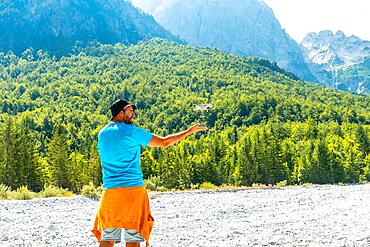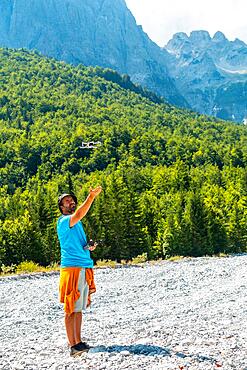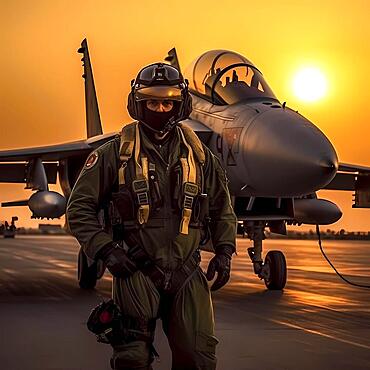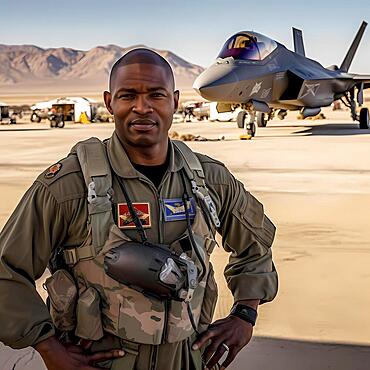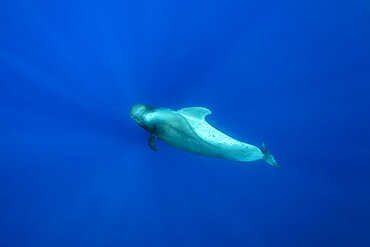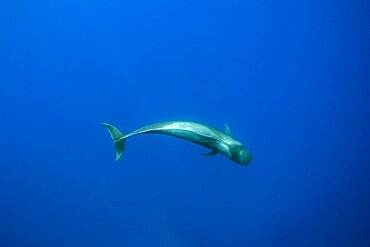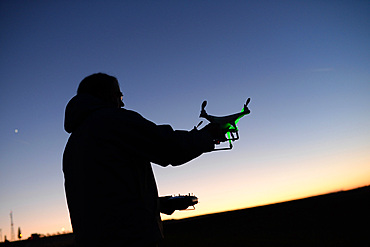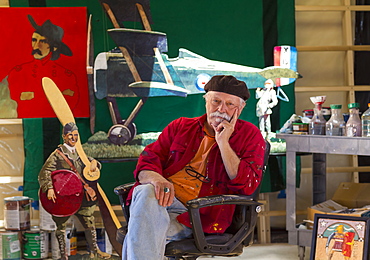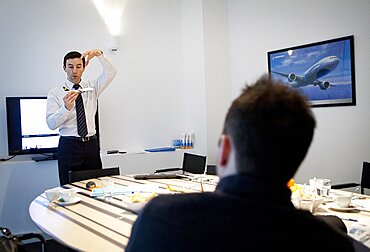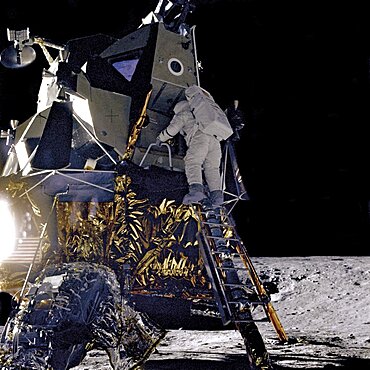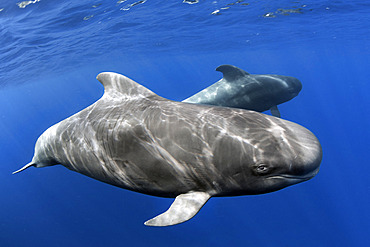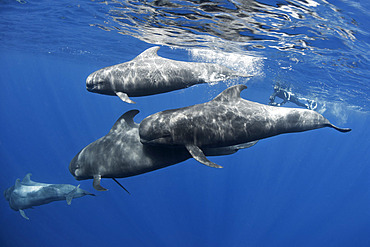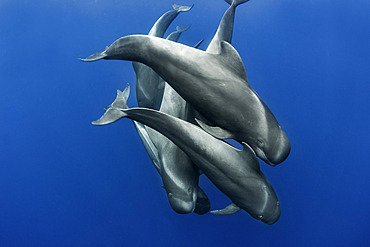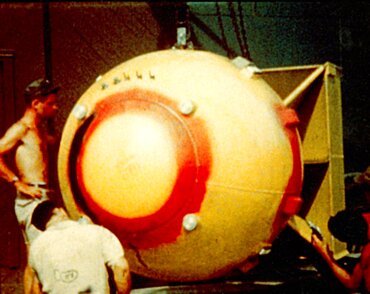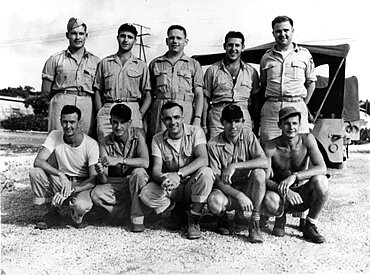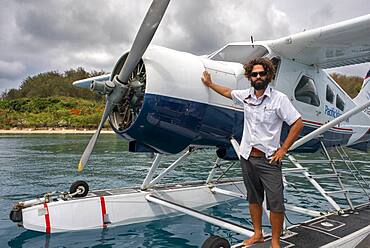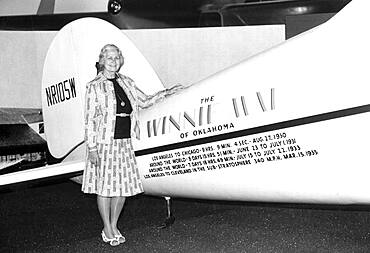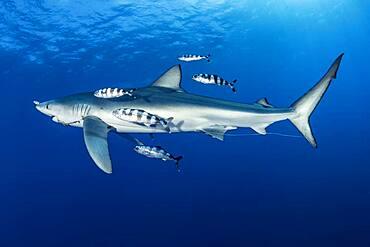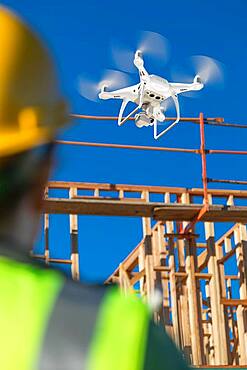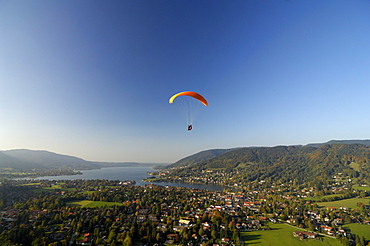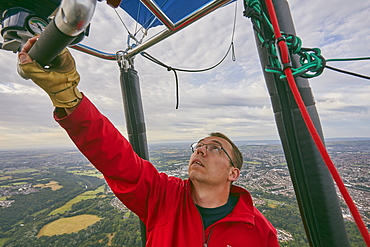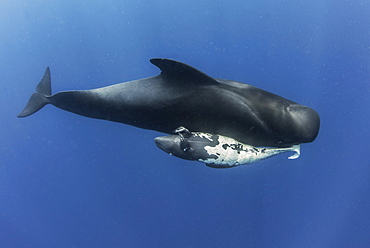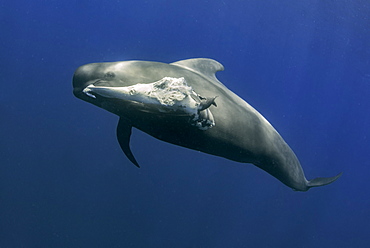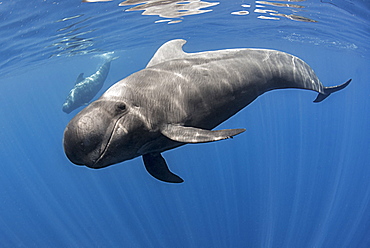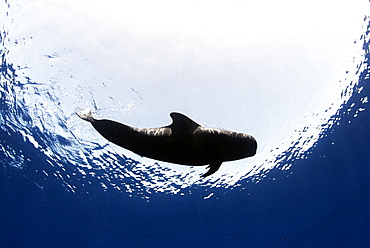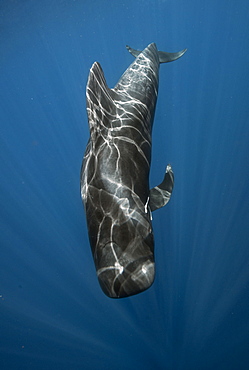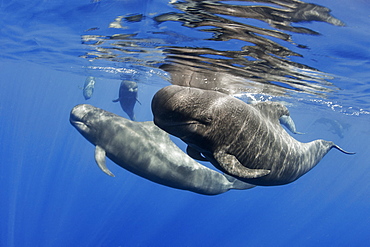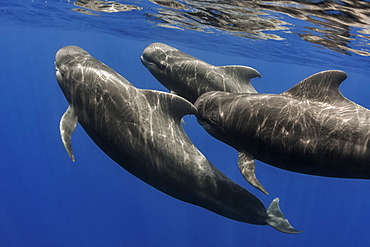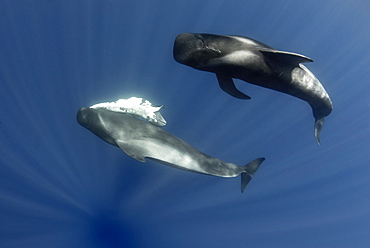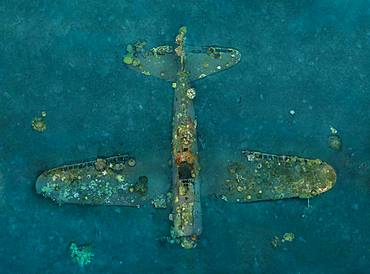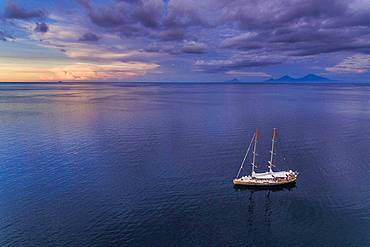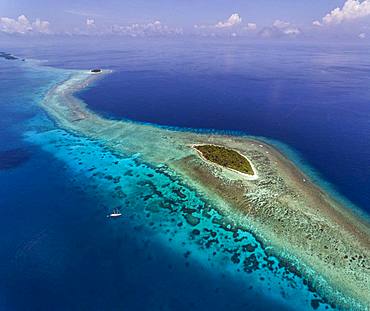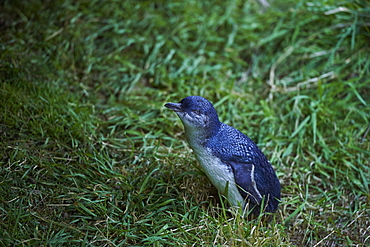Recent searches
Loading...
860-292381 - Sea Tomato jellyfish (Crambione mastigophora) with young pilot fish. The main food of Leatherback sea turtle (Dermochelys coriacea), Vulnerable. Kei ( or Kai ) Islands, Moluccas, eastern Indonesia, Banda Sea, Southwest Pacific Ocean.
860-292378 - Sea Tomato jellyfish (Crambione mastigophora) with young pilot fish. The main food of Leatherback sea turtle (Dermochelys coriacea), Vulnerable. Kei ( or Kai ) Islands, Moluccas, eastern Indonesia, Banda Sea, Southwest Pacific Ocean.
1112-8550 - Skull from a short-finned pilot whale (Globicephala Macrorhynchus), Urbina Beach, Isabela Island, Galapagos Islands, UNESCO World Heritage Site, Ecuador, South America
832-403407 - Drone pilot man taking off the drone on the mountain in Valbona natural park on vacation. Albania
832-403406 - Drone pilot man taking off exploring new places in the mountain. Use of drone photography
832-401764 - Young proud pilot stands in front of his F 35 fighter plane, AI generated
832-401762 - Young proud pilot stands in front of his F 14 fighter plane, AI generated
832-401763 - Young proud pilot stands in front of his F 14 fighter plane, AI generated
832-401761 - Young proud pilot stands in front of his F 35 fighter plane, AI generated
832-399548 - Old pilot station Kobba Klintar with museum and exhibition building in the shape of a pyramid, small island in the archipelago, harbour entrance Mariehamn, Aland Islands, Gulf of Bothnia, Baltic Sea, Finland, Europe
832-399549 - Old pilot station, pilot house Kobba Klintar, small island in the archipelago, harbour entrance Mariehamn, Aland Islands, Gulf of Bothnia, Baltic Sea, Finland, Europe
860-291100 - Squids regurgitated by a Short-finned pilot whale (Globicephala macrorhynchus) one of the two species of cetaceans in the genus Globicephala, which it shares with the long-finned pilot whale (G. melas). They are part of the oceanic dolphin family (Delphinidae). Terceira island, Azores, Portugal, Atlantic Ocean
860-291098 - Short-finned pilot whale (Globicephala macrorhynchus) one of the two species of cetaceans in the genus Globicephala, which it shares with the long-finned pilot whale (G. melas). They are part of the oceanic dolphin family (Delphinidae). Terceira island, Azores, Portugal, Atlantic Ocean
860-291101 - Short-finned pilot whale (Globicephala macrorhynchus) one of the two species of cetaceans in the genus Globicephala, which it shares with the long-finned pilot whale (G. melas). They are part of the oceanic dolphin family (Delphinidae). Terceira island, Azores, Portugal, Atlantic Ocean
746-91335 - Pilots are refueling the helicopter on the helipad. During winter the helicopter is the only link to the rest of Greenland. The traditional village Kullorsuaq on the shore of the Melville Bay, part of the Baffin Bay, in the far north of Greenland.
1350-6270 - A group of Gray's pilot whales (Globicephala macrorhynchus) swims in the waters of Tenerife, Spain
1245-2314 - The Kobba Klintar Pilot Station, elevated view, Mariehamn, Aland Islands, Finland, Europe
1350-5308 - Young man flying Phantom Drone outdoors at sunset
1350-5317 - Young man flying a quadcopter DJI phantom drone outdoors
1178-38175 - Portrait of older Caucasian man sitting in workshop
1348-3932 - Reportage in the Fear of Flying treatment centre in Paris, France. This centre offers courses given by Velina Negovanska, doctor in psychology, specialising in cognitive behavioural therapy and coping with stress and phobias, and Xavier Tytelman, an French navy ex-pilot.
1348-3468 - Reportage in the Fear of Flying treatment centre in Paris, France
1348-5271 - Prime crew of the Apollo 12 lunar landing mission
1348-2590 - Vial of niaid zika virus investigational dna vaccine
1348-3469 - Reportage in the Fear of Flying treatment centre in Paris, France
832-393686 - Pilot fish, Black golden pilot mackerel (Gnathanodon speciosus), Golden mackerel swims in front of Grey reef shark (Carcharhinus amblyrhynchos), Pacific Ocean
832-393684 - Nocturnal Tawny nurse shark (Nebrius ferrugineus) with black golden pilot mackerel (Gnathanodon speciosus), Golden mackerel, Indian Ocean, Maldives, Asia
860-290384 - Pilot whale (Globicephala macrorhynchus). Tenerife, Canary Islands.
860-290257 - Pilot whale (Globicephala macrorhynchus). Tenerife, Canary Islands.
860-290258 - Pilot group. Calderon (Globicephala macrorhynchus) with naturalist photographer. Tenerife, Canary Islands. Photograph taken with the mandatory permits of the MAPAMA.
860-290385 - Pilot whale (Globicephala macrorhynchus). Tenerife, Canary Islands.
1350-3327 - Pilot Boat "Arrow 2" and the Astoria-Megler Bridge, connecting Oregon and Washington across the Columbia River, at sunset; Astoria, Oregon.
1178-35609 - Caucasian woman sitting in airplane cockpit
1178-35608 - Caucasian woman wearing a headset near airplane
1178-35611 - Caucasian woman standing near an airplane cockpit
1178-35607 - Caucasian woman standing near helicopter in field
1178-35612 - Caucasian woman sitting in airplane cockpit
1178-35610 - Caucasian woman leaning on airplane wing
1349-1046 - WWWII, Bockscar Crew, Nagasaki Mission, 1945
1350-1807 - Exploring the Sea of Cortez on zodiac, Baja California, Mexico
1350-2035 - Pacific Island Air flight company in Fiji. Boat plane off West coast of Viti Levu, Fiji, Pacific Islands, Pacific
1349-321 - Fay Gillis Wells, American Aviatrix and Journalist
860-288845 - Blue shark (Prionace glauca) and Pilot fish (Naucrates ductor), Pico Island, Azores, Portugal, Atlantic Ocean
860-288847 - Blue shark (Prionace glauca) with fishing hook and Pilot fish (Naucrates ductor), Pico Island, Azores, Portugal, Atlantic Ocean
832-391070 - Female pilot flies drone quadcopter inspecting construction site
1113-103024 - Person paragliding near Lake Tegernsee, near Rottach-Egern, Tegernsee, Upper Bavaria, Bavaria, Germany
1202-369 - A spectacular float at the amazing Bridgwater Carnival, held in Bridgwater annually in early November, Somerset, England, United Kingdom, Europe
832-387960 - Pilot Fish (Naucrates ductor) swimming in front of mouth, reef manta ray (Mobula alfredi) with curled up head fins, Great Barrier Reef, Coral Sea, Pacific Ocean, Australia, Oceania
832-384441 - Oceanic whitetip shark (Carcharhinus longimanus) with Pilot Fish (Naucrates ductor) swims under sea surface in the open sea, Red Sea, Egypt, Africa
1202-186 - A balloon pilot adjusting the burning gas jets that heat air inside the balloon, during the Bristol International Balloon Fiesta, England, United Kingdom, Europe
1202-187 - A balloon pilot adjusting the burning gas jets that heat air inside the balloon, during the Bristol International Balloon Fiesta, England, United Kingdom, Europe
1112-4388 - Short-finned pilot whale (Globicephala macrorhynchus), underwater off Isla San Marcos, Baja California Sur, Mexico, North America
1112-4384 - Short-finned pilot whale (Globicephala macrorhynchus), tail-lobbing off Isla San Marcos, Baja California Sur, Mexico, North America
1112-4385 - Short-finned pilot whale (Globicephala macrorhynchus), with Zodiacs off Isla San Marcos, Baja California Sur, Mexico, North America
1112-4387 - Short-finned pilot whale (Globicephala macrorhynchus), underwater off Isla San Marcos, Baja California Sur, Mexico, North America
1112-4386 - Short-finned pilot whale (Globicephala macrorhynchus), underwater off Isla San Marcos, Baja California Sur, Mexico, North America
860-287899 - Pod of short-finned pilot whales, (Globicephala macrorhynchus), Dominica, Caribbean Sea, Atlantic Ocean.
860-288205 - Pilot whale (Globicephala macrorhynchus). A dead neonate carried by an adult, probably his mother. Tenerife, Canary Islands.
860-288203 - Pilot whale (Globicephala macrorhynchus). A dead neonate carried by an adult, probably his mother. Tenerife, Canary Islands.
860-288210 - Pilot whale (Globicephala macrorhynchus). Tenerife, Canary Islands.
860-288207 - Pilot whale (Globicephala macrorhynchus). Tenerife, Canary Islands.
860-288533 - Short-finned pilot Whale (Globicephala macrorhynchus), Tenerife, Canary Islands, Spain, Atlantic Ocean
860-288534 - Short-finned pilot Whale (Globicephala macrorhynchus), Tenerife, Canary Islands, Spain, Atlantic Ocean
860-288532 - Short-finned pilot Whale (Globicephala macrorhynchus), Tenerife, Canary Islands, Spain, Atlantic Ocean
860-288209 - Pilot whale (Globicephala macrorhynchus). Tenerife, Canary Islands.
860-288206 - Pilot whale (Globicephala macrorhynchus). Tenerife, Canary Islands.
860-288202 - Pilot whale (Globicephala macrorhynchus). A dead neonate carried by an adult, probably his mother. Tenerife, Canary Islands.
1216-508 - Micro-lighting over the sand dunes of the Namibian Desert, Namibia, Africa
1225-1328 - A helicopter flies towards the Himalayas as the pilot points towards the Ganesh Himal range through the window, Langtang region, Nepal, Asia
860-287442 - Tara Pacific expedition - november 2017 Kimbe Bay, papua New Guinea, Zero wreck: Coral growth on this wreck is from a period of 74 years ! D: 15 m The ZERO, is a Japanese WW2 fighter plane wreck. This Zero wreck was discovered in January 2000 by local William Nuli while he was freediving for sea cucumbers. He asked the Walindi Plantation Resort dive team if they might know what it was, and when they investigated they uncovered the intact wreck of a Zero fighter, resting on a sedimented bottom in 15 m depth. This World War II Japanese fighter is almost completely intact. The plane is believed to have been ditched, the pilot is believed to have survived, but was never found on the island. He never returned home. Maybe he disappeared in the jungle? On 26th December 1943, during the battle of Cape Gloucester, the Japanese pilot made an emergency landing, ditching his Mitsubishi A6M Zero plane into the sea approximately 100m off West New Britain Province. The plane was piloted by PO1 Tomiharu Honda of the 204st K?k?tai. His fate is unknown but it is believed the he made a controlled water landing after running out of fuel and survived. Although he failed to return to his unit, the plane was found with the throttle and trim controls both set for landing and the canopy was open. There are no visible bullet holes or other shrapnel damage and the plane is still virtually intact after over 70 years underwater. It is a A6M2 Model 21 Zero, made famous for its use in Kamikaze attacks by the Japanese Imperial Navy. The wreck has the Manufacture Number 8224 and was built by Nakajima in late August 1942.
860-287440 - Tara Pacific expedition - november 2017 Zero wreck, vertical view Orthomosaic from 3D photogrammetry (13500 x 10000 px). D: 15 m Kimbe Bay, papua New Guinea, Coral growth on this wreck is from a period of 74 years ! The ZERO, is a Japanese WW2 fighter plane wreck. This Zero wreck was discovered in January 2000 by local William Nuli while he was freediving for sea cucumbers. He asked the Walindi Plantation Resort dive team if they might know what it was, and when they investigated they uncovered the intact wreck of a Zero fighter, resting on a sedimented bottom in 15 m depth. This World War II Japanese fighter is almost completely intact. The plane is believed to have been ditched, the pilot is believed to have survived, but was never found on the island. He never returned home. Maybe he disappeared in the jungle? On 26th December 1943, during the battle of Cape Gloucester, the Japanese pilot made an emergency landing, ditching his Mitsubishi A6M Zero plane into the sea approximately 100m off West New Britain Province. The plane was piloted by PO1 Tomiharu Honda of the 204st K?k?tai. His fate is unknown but it is believed the he made a controlled water landing after running out of fuel and survived. Although he failed to return to his unit, the plane was found with the throttle and trim controls both set for landing and the canopy was open. There are no visible bullet holes or other shrapnel damage and the plane is still virtually intact after over 70 years underwater. It is a A6M2 Model 21 Zero, made famous for its use in Kamikaze attacks by the Japanese Imperial Navy. The wreck has the Manufacture Number 8224 and was built by Nakajima in late August 1942.
860-287439 - Tara Pacific expedition - november 2017 Tara in Kimbe Bay, papua New Guinea, H: 103,6 m, mandatory credit line: Photo: Christoph Gerigk, drone pilot: Guillaume Bourdin - Tara Expeditions Foundation
860-287437 - Tara Pacific expedition - november 2017 Small coral island and adjacent reef, near Yanaba Island, Papua New Guinea, H: 536,6 m, mandatory credit line: Photo: Christoph Gerigk, drone pilot: Guillaume Bourdin - Tara Expeditions Foundation
860-287438 - Tara Pacific expedition - november 2017 Small coral island and adjacent reef, near Yanaba Island, Papua New Guinea, H: 452.3 m, mandatory credit line: Photo: Christoph Gerigk, drone pilot: Guillaume Bourdin - Tara Expeditions Foundation
1116-42106 - Flying in a helicopter over the icefields in Kluane National Park, near Haines Junction, Yukon, Canada
1116-42107 - Flying in a helicopter over the icefields in Kluane National Park, near Haines Junction, Yukon, Canada
860-286716 - Short finned pilot whale (globicephala macrocephalus) A young pilot whale surfacing in a silky sea. Canary Islands
1113-102582 - Balloon pilots at the break of dawn in Goereme, Cappadocia, Turkey
358-675 - A Little Blue Penguin comes ashore to find its burrow for the night at Pilots Beach, Otago Peninsula, South Island, New Zealand, Pacific
1112-3734 - Bull short-finned pilot whale (Globicephala macrorhynchus), surfacing near Isla Danzante, Baja California Sur, Mexico, North America
1112-3735 - Short-finned pilot whales (Globicephala macrorhynchus), surfacing near Isla Danzante, Baja California Sur, Mexico, North America
1112-3733 - Adult short-finned pilot whale (Globicephala macrorhynchus), surfacing near Isla Danzante, Baja California Sur, Mexico, North America
857-94552 - Drone pilot selfie along a river bed (Drone)



